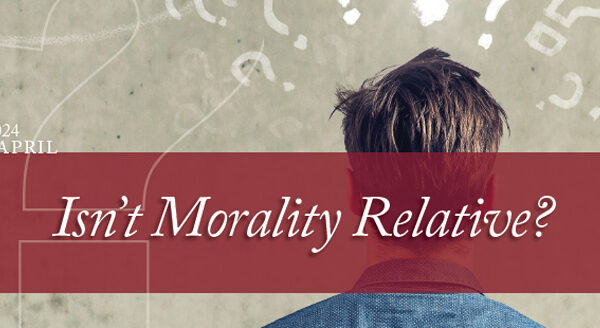Back to series
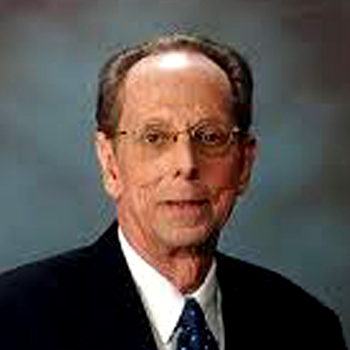

Recommended Reading:
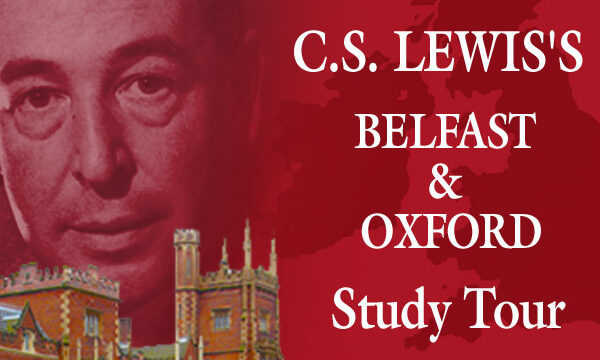
In the Footsteps of John Knox On the Five Hundredth Anniversary of His Birth
Click here to open a Print - Friendly PDF
Haddington
| John Knox was born in the town of Haddington in East Lothian, Scotland, in 1514.1 The son of a yeoman farmer, Knox described himself as of “the middling sort.”2 Knox did not covet a great place in state or church. He told Mary, Queen of Scots, that he was not “a lord or baron,” though he was indeed a “profitable” member of society.3 A few years before he died he expressed gratitude that God had been pleased to make him “not a lord-like bishop, but a painful [careful] preacher of his blessed evangel.”4
Little is known about Knox’s early life. After study at St. Andrews University, he was ordained as a priest of the Catholic Church. He studied law and worked as a papal notary. He also became a tutor to the sons of two wealthy men. At some point Knox became a Protestant and accompanied George Wishart, his example and inspiration, on preaching missions, serving as his bodyguard with a two-handed sword. On a December night in 1545, Wishart preached his last sermon. Expecting to be arrested, he sent Knox home with the words “Return to your bairns and God bless you. One is sufficient for a sacrifice.”5 George Wishart was taken to St. Andrews, where, on the orders of Cardinal David Beaton, he was burned at the stake on March 1, 1546. St. AndrewsThe opening scene in the movie Chariots of Fire shows a group of young men, and a few dogs, running happily along the shore at St. Andrews.6 The Martyrs’ Monument, erected in 1843 near the Royal and Ancient Club House, appears briefly in the background. It commemorates four men, including George Wishart, martyred in St. Andrews. Wishart celebrated the Lord’s Supper with a few friends, then, as he had promised, “suffered gladly for the Word’s sake.”7
A few weeks after Wishart’s death, a group with mixed motives—political, personal, and religious—murdered Cardinal Beaton and took possession of his castle in St. Andrews. Sympathizers joined them, including John Knox and his two pupils. When a few leaders asked Knox to become the preacher for the occupying rebels, he refused, because, he said, “he could not run where God had not called him.”8 The entire group then issued a public call, which Knox reluctantly accepted. At times during the standoff the people in the castle were free to come and go, allowing him to preach his first sermon at Holy Trinity Parish Church in St. Andrews. Knox later wrote, “How small was my learning, and how weak I was of judgment, when Jesus Christ called me to be his steward.”9 A few weeks later, with French ships assisting in the governmental siege, the “Castilians,” as they are known, were forced to surrender. Taken prisoner, Knox rowed as a galley slave for the next nineteen months, making at least two trips from France back to St. Andrews. When he was asked on the ship if he recognized the port in the distance, Knox replied: “Yes, I know it well, for I see the steeple of that place where God first in public opened my mouth to his glory, and I am fully persuaded, how weak that ever I now appear, that I shall not depart this life, till that my tongue shall glorify his godly name in the same place.”10 EnglandKnox was released by the French in 1549. Because it was not safe for him to return to Scotland, he went to England, where Archbishop Cranmer was gathering a body of international Protestants to help create the new Church of England. Knox was appointed pastor of the parish of Berwick, a rough border town, and later served a congregation in Newcastle. The northern England location of these two towns gave Knox a wide influence in both England and Scotland. Knox participated in discussions about the new Book of Common Prayer and served as a chaplain of King Edward VI. He declined appointment as bishop of Rochester and as pastor of a London church, but did preach throughout the south of England. Fearing that difficult days were ahead, he wrote A Treatise on Prayer to encourage “the small and dispersed flock of Jesus Christ” to call to God and trust him in uncertain times.11 When Edward VI died in 1553, the religious situation dramatically changed under the Catholic Mary Tudor, known in history as “Bloody Mary” (not to be confused with Mary Stuart, Queen of Scots). John Knox, like many others, left England for the safety of the Continent. With misgivings that he had deserted his ministry in England, Knox determined to do what he could to further the Reformation in Europe, and to wait until the time was ripe for him to return home. GenevaJohn Knox was called to be one of the ministers of a group of English Protestants in Frankfurt (Germany) but disagreed with them concerning forms of worship. The majority wanted to follow strictly the English Book of Common Prayer, but Knox wanted to introduce changes. He left the troubled situation in Frankfurt for Geneva, where he found a Reformed church with confession, worship, and discipline carefully based on the Word of God. It was “the most perfect school of Christ that ever was in the earth since the days of the apostles,” Knox wrote; “in other places, I confess Christ to be truly preached; but manners and religion so sincerely reformed, I have not yet seen in any other place.”12 Knox returned to Scotland early in 1556 and spent almost a year encouraging and strengthening the growing body of Protestants. He preached in homes, and at Calder House in West Lothian he celebrated the first Protestant communion service in Scotland.13 Realizing that his country was not yet ready for the Reformation, Knox went back to Geneva, with his wife, Marjory, and her mother. In 1557, responding to an urgent request from Scottish nobles and with John Calvin’s encouragement, Knox headed back to Scotland. But at the French port of Dieppe, he received letters that urged him to delay his coming. Returning to Geneva, he served his English congregation there for several happy years, helping to translate what became the Geneva Bible of 1560, producing a treatise on predestination, and writing letters to Scotland in which he urged the queen regent, Mary of Guise, the nobles, and the common people to move ahead with reform. The International Monument of the Reformation in Geneva features fifteen-foot statues of the four reformers who were in the city in 1559—Guillaume Farel, John Calvin, Theodore Beza, and John Knox. In his biography of Calvin, Bernard Cottret describes the statues: “Little distinguishes these four bearded stone figures from each other: the same cap, the same pastoral robe, the same Bible in the hand. Precedence among the principals is absent; the Genevan monument associates preeminence with equality.”14 Along the 325-foot wall, a section of the former city wall, there are also scenes and inscriptions of various people and events connected with the Reformation, including one of John Knox preaching in Edinburgh, with the words of Thomas Randolph, Queen Elizabeth’s envoy in Scotland, “I assure you that the voice of one man is able in one hour to put more life in us than five hundred trumpets continually blustering our ears.”15 EdinburghAfter five years in England and another five years on the Continent, in 1559 Knox returned to Scotland for good. In Perth, he preached a fiery sermon that stirred up some listeners to destroy images in the Catholic Church and loot nearby monasteries. Knox tried unsuccessfully to thwart the actions of what he called the “rascal multitude.”16 In St. Andrews, Knox preached on Christ’s cleansing of the temple, before Protestant leaders, Catholic prelates, and common folk.17 He accepted a post as the minister of St. Giles Kirk in Edinburgh, where he served until he died twelve years later. During the early days of August 1560, as members of the Scottish Parliament made their way to the capitol, Knox preached to great congregations on the book of Haggai, the prophet who had called upon the people of Israel recently returned from exile to build the house of God before turning their attention to their own houses. “The doctrine was proper for the time,” Knox wrote, but not everyone was happy with the sermons. “Some,” said Knox, “having greater respect to the world than to God’s glory, feeling themselves pricked, said in mockage, ‘We must now forget ourselves, and bear the barrow to build the houses of God.’”18 For the new Reformed church Knox and five other ministers, all with the first name of John, in four days drew up a Confession of Faith. Forged in the fire and heat of the battle, the Confession is “as craggy, irregular, powerful, and unforgettable as the hills of northern Scotland.”19 It was overwhelmingly accepted by the parliament, which also abolished the celebration of the Mass and papal authority throughout the land. The Book of Discipline, largely the work of Knox, set forth the Presbyterian form of church government, presented a system of universal free education, and provided for support of ministers and poverty relief. The first meeting of the General Assembly of the Church of Scotland met in Edinburgh in December. The year 1560 had proved to be momentous for Knox, but it ended with great sadness. In December Marjory died, leaving him with two little sons. Knox mourned her loss with a heavy heart. In his will, written some years later, he praised his “dearest spouse” of “blessed memory.”20 In 1563 Knox was married again, to seventeen-year-old Margaret Stewart—related by blood to Mary, Queen of Scots! In 1561, after the death of her husband, Frances II of France, Queen Mary came home to Scotland to assume her rule. She faced great obstacles in her efforts to return Scotland to the Catholic Church, the greatest of which was John Knox. On five occasions the queen required him to appear before her at the palace to receive her rebuke for his sermons and actions. Against the background of the religious struggle, Mary’s personal life played itself out in unfortunate marriages, scenes of violence and murder, and, finally, flight from Scotland, leaving her infant son, James VI, king under the direction of a series of regents.21 While keeping a wary eye on political developments, Knox gladly gave his attention to what he considered his primary calling, the preaching of the gospel. In the preface to a sermon published in 1565 he said: Considering myself rather called of my God to instruct the ignorant, comfort the sorrowful, confirm the weak, and rebuke the proud, by tongue and lively voice in these most corrupt days, than to compose books for the age to come . . . I decreed to contain myself within the bonds of that vocation, whereunto I found myself especially called.22 Knox did, however, continue to write—letters, treatises, and above all a History of the Reformation in Scotland, on which he would work the rest of his life. Henry R. Sefton describes Knox’s History: “It is a remarkable testimony from one of the leading participants in the Reformation movement rather than an objective history, but it is a valuable source of information which all subsequent historians of the period can ignore only at their peril.”23 W. Stanford Reid says that in his History Knox put “flesh and blood on the whole Reformation movement.”24 According to R.M. Healey, Knox’s History is “an extended sermon on the duty of Scottish Christians to rely on God.”25
In the movie Chariots of Fire, Eric Liddell tips his cap as he runs past this statue of John Knox on his way to a meeting for young people. On the hill behind the cathedral in Glasgow sprawls the Necropolis with many elaborate tombs and memorials, the most conspicuous being a Doric column raised in 1825 to the memory of the Reformers and crowned by a towering statue of John Knox. St. Andrews AgainJohn Knox’s enemies, and even some of his supporters, wanted the controversial preacher out of Edinburgh. In 1571 Knox went to St. Andrews, where he spent more than a year away from his congregation, but not away from preaching. James Melville, a student at St. Andrews, wrote in his diary: Of all the benefits I had that year [1571] was the coming of that most notable prophet and apostle of our nation, Mr John Knox, to St. Andrews . . . I heard him teach the prophecy of Daniel that summer. I had my pen and my little book, and took away such things as I could comprehend. In the opening up of his text he was moderate the space of an half-hour; but when he entered to application, he made me so to shudder and tremble that I could not hold a pen to write.27 The congregation at St. Giles recalled Knox, and he came back to Edinburgh, with the understanding that he would be free to speak out plainly about what was happening in church and state. Edinburgh AgainKnox and his family were lodged in a house near St. Giles, now known as the “John Knox House.”28 He preached again in the church [kirk] until his last sermon on November 9, 1572. Thomas Smeton, later principal of the University of Glasgow, described the scene, “After he had pronounced the blessing upon the people, with a mind more cheerful than usual, but with a weak body, and leaning upon his staff, he departed, accompanied by almost the whole assembly, to his house, from which he did not again come forth in life.”29 On November 17, Knox called the elders and deacons to his bedside to bid them goodbye and to “exhort them to stand constant in that doctrine which they had heard of his mouth, how unworthy that ever he was.” Others came too, so that the scene in the house halfway along the Royal Mile was like that at the end of The Pilgrim’s Progress, “where a great concourse of pilgrims accompany Mr. Valiant-for-Truth to the river-side.”30 November 24 was John Knox’s last day on earth. A little after noon, he asked his wife to read the fifteenth chapter of 1 Corinthians. Some hours later he said to her, “Go, read where I cast my first anchor,” and she read the seventeenth chapter of John’s Gospel. Later that night family and friends gathered around his bed for evening prayers. Someone asked, ‘Sir, heard you the prayers?’ Knox answered, ‘I would to God that you and all men heard them as I have heard them. I praise God of that heavenly sound!’”31 A little later, he quietly passed away. From his house the funeral procession moved to St. Giles Churchyard on November 26. Standing beside the open grave, the earl of Morton, newly appointed regent, uttered words long remembered: “Here lies one who never feared nor flattered any flesh.”32 Robert Louis Stevenson wrote that the ancient burying ground of Edinburgh . . . behind St. Giles’s Church . . . has disappeared . . . and for those ignorant of its history, I know only one token that remains . . . Two letters and a date mark the resting-place of the man who made Scotland over again in his own image, the indefatigable, undissuadable John Knox. He sleeps within call of the church that so often echoed to his preaching.33 |
|||
| Notes: 1. In 1881 at the site of the house where Knox was thought to have been born, an oak tree was planted “after the wish of the late Thomas Carlyle,” according to the inscription on a nearby stone. 2. W. Stanford Reid, Trumpeter of God (New York: Charles Scribner’s Sons, 1974), xv. 3. John Knox’s History of the Reformation in Scotland, ed. William Croft Dickinson, 2 vols. (London, 1949) 2:83. Hereafter History. 4. The Works of John Knox, ed. David Laing, 6 vols. (Edinburgh, 1864) 6:558ff. Hereafter Works. 5. History 1:139. 6. There were about twenty Protestant martyrs in Scotland between 1528 and 1558. John Ogilvie (1579-1615) was Scotland’s only Roman Catholic martyr. 7. History 1:60–74 and 2:233–45. 8. Reid, Trumpeter of God, 47. 9. Selected Writings of John Knox: Public Epistles, Treatises, and Expositions to the Year 1559 (Dallas: Presbyterian Heritage Publications, 1995), 227. 10. History 1:109. 11. Selected Writings of John Knox, 71–100. 12. Works 4:239–41. 13. Sir David Wilkie (1785–1841), the most celebrated Scottish artist of the early nineteenth century, produced an unfinished painting, “John Knox Administering the Sacrament at Calder House.” 14. Bernard Cottret, Calvin: A Biography (Grand Rapids: Eerdmans, 1995), xii. Actually Beza is represented holding the Rules of the Academy, founded in 1559, setting forth the Reformed principles of education. 15. Reid, Trumpeter of God, 216. 16. History 1:161. 17. Reid, Trumpeter of God, 173. David Wilkie’s painting of John Knox [preaching] before the Lords of the Congregation (on June 11, 1559) dramatically depicts this scene. 18. Works 1:335. 19. Edward A. Dowey Jr., A Commentary on the Confession of 1967 and An Introduction to “The Book of Confessions” (Philadelphia: Westminster Press, 1968), 175. 20. History 1:351. 21. A stained glass window in St. Giles depicts the murder of Regent Moray in 1569 and John Knox preaching at the funeral. 22. Works 6:229. 23. Henry R. Sefton, John Knox: An Account of the Development of His Spirituality (Edinburgh: Saint Andrew Press, 1993), 33. 24. Reid, Trumpeter of God, 203. 25. R.M. Healey, “John Knox’s ‘History’: A ‘Compleat’ Sermon on Christian Duty,” Church History 61 (1992), 333. 26. David George Mullan writes: John Knox “is not the sum total of the Scottish Reformation, but one can hardly conceive of that event without him standing tall as he does in the quadrangle at New College.” Crawford Gribben and David George Mullan, Literature and the Scottish Reformation (Ashgate, 2009), 250. 27. James Melville, The Autobiography and Diary of James Melvill [sic] (Edinburgh, 1842), 33. 28. The John Knox House was built sometime before 1490 and is said to be the oldest house in Edinburgh. It was probably the residence of the Reformer during a portion of the last years of his life. 29. Works 6:654. 30. Charles John Guthrie, John Knox and John Knox’s House (Edinburgh: Oliphant Anderson and Ferrier, 1905), 80. 31. Guthrie, John Knox, 85. 32. Reid, Trumpeter of God, 42. See Works 6:lii. There are several versions of Morton’s testimony to Knox. 33. Robert Louis Stevenson, Edinburgh: Picturesque Notes (London: Pallas Athene, 2001), 34–35. The graveyard has been paved over, but Knox’s burial spot is located by a plaque in parking space number 44. It is inscribed with I K 1572 (representing Iohannes Knox). |
|||

David B. Calhoun
ProfessorDavid B. Calhoun, (1937-2021) was Professor Emeritus of Church History at Covenant Theological Seminary in St. Louis, Missouri. A minister of the Presbyterian Church in America, he has taught at Covenant College, Columbia Bible College (now Columbia International University), and Jamaica Bible College (where he was also principal). Calhoun has served with Ministries in Action in the West Indies and in Europe and as dean of the Iona Centres for Theological Study. He was a board member (and for some years president) of Presbyterian Mission International, a mission board that assists nationals who are Covenant Seminary graduates to return to their homelands for ministry.

Recommended Reading:
The Reformation: A History, by Diarmaid MacCulloch, Penguin Books
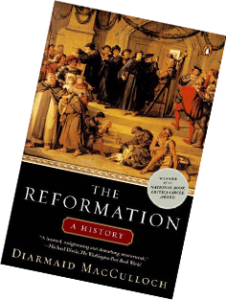 The National Book Critics Circle Award–winning history of the Reformation—from the New York Times bestselling author of Christianity and Silence.
The National Book Critics Circle Award–winning history of the Reformation—from the New York Times bestselling author of Christianity and Silence.
At a time when men and women were prepared to kill—and be killed—for their faith, the Protestant Reformation tore the Western world apart.
Acclaimed as the definitive account of these epochal events, Diarmaid MacCulloch’s award-winning history brilliantly re-creates the religious battles of priests, monarchs, scholars, and politicians—from the zealous Martin Luther and his Ninety-Five Theses to the polemical John Calvin to the radical Igantius Loyola, from the tortured Thomas Cranmer to the ambitious Philip II.
 COPYRIGHT: This publication is published by C.S. Lewis Institute; 8001 Braddock Road, Suite 301; Springfield, VA 22151. Portions of the publication may be reproduced for noncommercial, local church or ministry use without prior permission. Electronic copies of the PDF files may be duplicated and transmitted via e-mail for personal and church use. Articles may not be modified without prior written permission of the Institute. For questions, contact the Institute: 703.914.5602 or email us.
COPYRIGHT: This publication is published by C.S. Lewis Institute; 8001 Braddock Road, Suite 301; Springfield, VA 22151. Portions of the publication may be reproduced for noncommercial, local church or ministry use without prior permission. Electronic copies of the PDF files may be duplicated and transmitted via e-mail for personal and church use. Articles may not be modified without prior written permission of the Institute. For questions, contact the Institute: 703.914.5602 or email us.
-
Recent Podcasts
The Side B Stories – Dr. James Tour’s story
by Jana Harmon, James Tour on April 12, 2024From a secular Jewish home, scientific scholar and...Read More
-
Why are Christians so Bad?
by Paul Joen on April 5, 2024
-
Questions That Matter Podcast – Dai Hankey and Gospel Hope for Weary Souls
by Randy Newman, Dai Hankey on April 5, 2024
-
Recent Publications
Isn’t Morality Relative?
by Christopher L. Reese on April 1, 2024It is widely accepted in the Western world...Read More
-
Do Muslims and Christians Worship the Same God?
by Andy Bannister on March 1, 2024
-
Artificial Intelligence and Its Impacts on Humanity
by John Lennox on February 13, 2024
0
All Booked
0.00
All Booked
0.00
All Booked
20599
GLOBAL EVENT: 2024 Study Tour of C.S. Lewis’s Belfast & Oxford
https://www.cslewisinstitute.org/?event=global-event-2023-study-tour-of-c-s-lewis-belfast-oxford-2&event_date=2024-06-22®=1
https://www.paypal.com/cgi-bin/webscr
2024-06-22

Next coming event
Days
Hours
Minutes
Seconds
GLOBAL EVENT: 2024 Study Tour of C.S. Lewis’s Belfast & Oxford
On June 22, 2024 at 12:00 pmat Belfast, Northern Ireland & Oxford, EnglandSpeakers
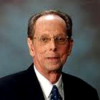
David B. Calhoun
Professor
Team Members

David B. Calhoun
ProfessorDavid B. Calhoun, (1937-2021) was Professor Emeritus of Church History at Covenant Theological Seminary in St. Louis, Missouri. A minister of the Presbyterian Church in America, he has taught at Covenant College, Columbia Bible College (now Columbia International University), and Jamaica Bible College (where he was also principal). Calhoun has served with Ministries in Action in the West Indies and in Europe and as dean of the Iona Centres for Theological Study. He was a board member (and for some years president) of Presbyterian Mission International, a mission board that assists nationals who are Covenant Seminary graduates to return to their homelands for ministry.




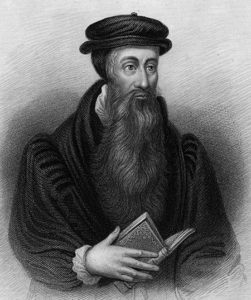
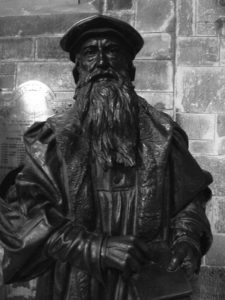 A bronze statue of John Knox, now standing inside St. Giles Kirk, was erected in 1906 “by Scotsmen at home, in Australia, in Canada, and the United States.” Another statue of Knox, in the courtyard of New College, Edinburgh, bears the inscription: “Erected by Scotsmen who are mindful of the benefits conferred by John Knox on their native land, 1896.”26
A bronze statue of John Knox, now standing inside St. Giles Kirk, was erected in 1906 “by Scotsmen at home, in Australia, in Canada, and the United States.” Another statue of Knox, in the courtyard of New College, Edinburgh, bears the inscription: “Erected by Scotsmen who are mindful of the benefits conferred by John Knox on their native land, 1896.”26